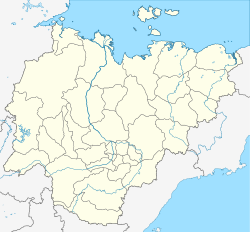| Location | |
|---|---|
| Location | Derbeke basin |
| Sakha Republic | |
| Country | Russia |
| Coordinates | 68°15′N136°30′E / 68.250°N 136.500°E |
| Production | |
| Products | Silver |
The Derbeke-Nelgesinsky mine is one of the largest silver mines in Russia and in the world. [1] The mine is located in the Nelgesin Range area, Sakha Republic. [1] The mine has estimated reserves of 160 million oz of silver. [1]
